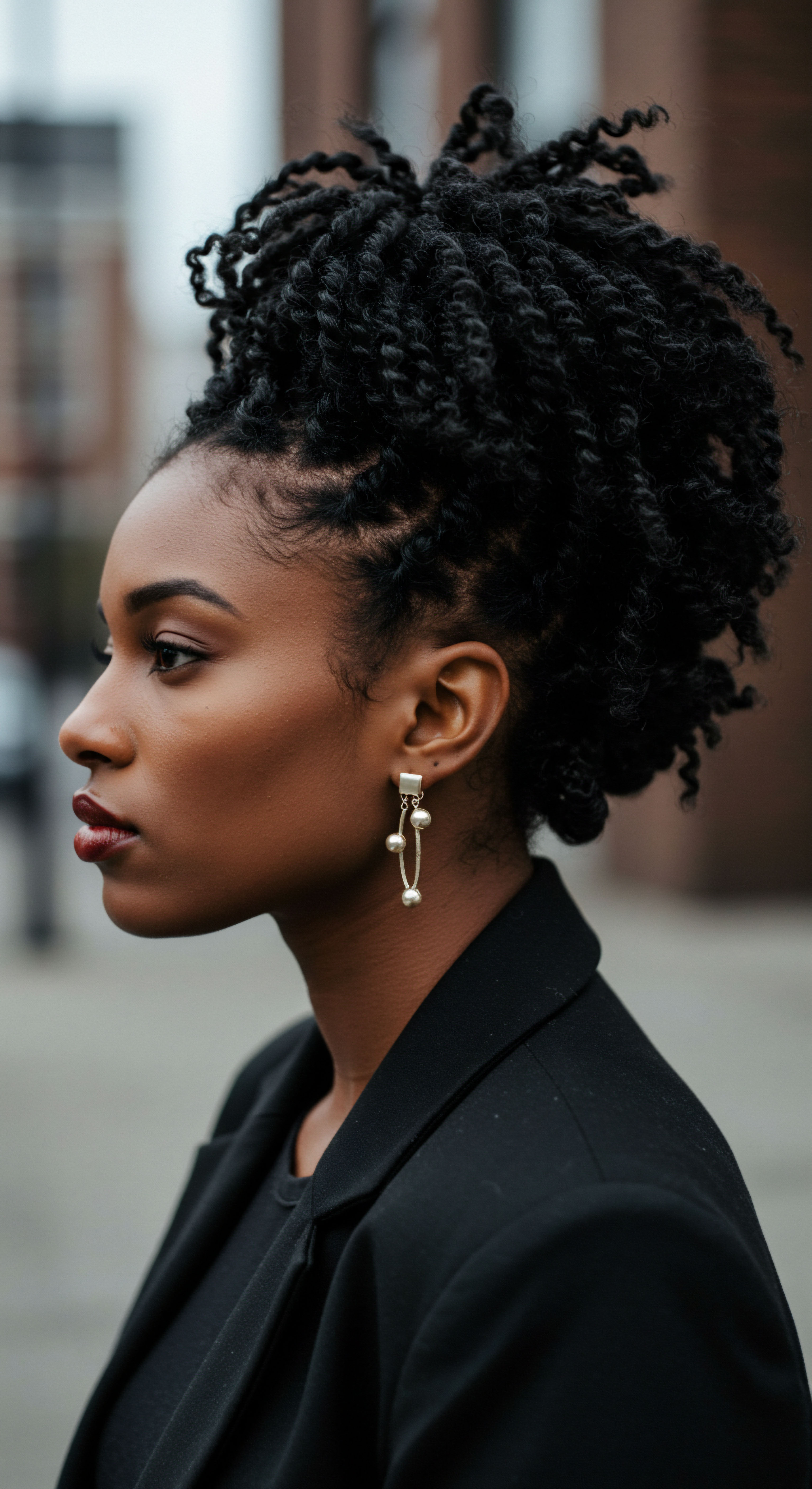
Roots
The quiet hours of slumber, a time for the world to rest and for our bodies to mend, hold a subtle yet profound interaction for those with textured hair. Each night, as our curls, coils, and waves settle onto a pillow, an exchange begins, one that might, over time, subtly reshape their inherent moisture story. The question of whether the humble cotton pillowcase can indeed lead to a parched landscape for textured strands is not merely about a fabric’s surface; it speaks to the very architecture of hair, its thirst, and its delicate relationship with its surroundings. It calls us to consider the foundational elements of hair health, inviting a closer look at what truly makes our hair thrive or, conversely, surrender its vital hydration.
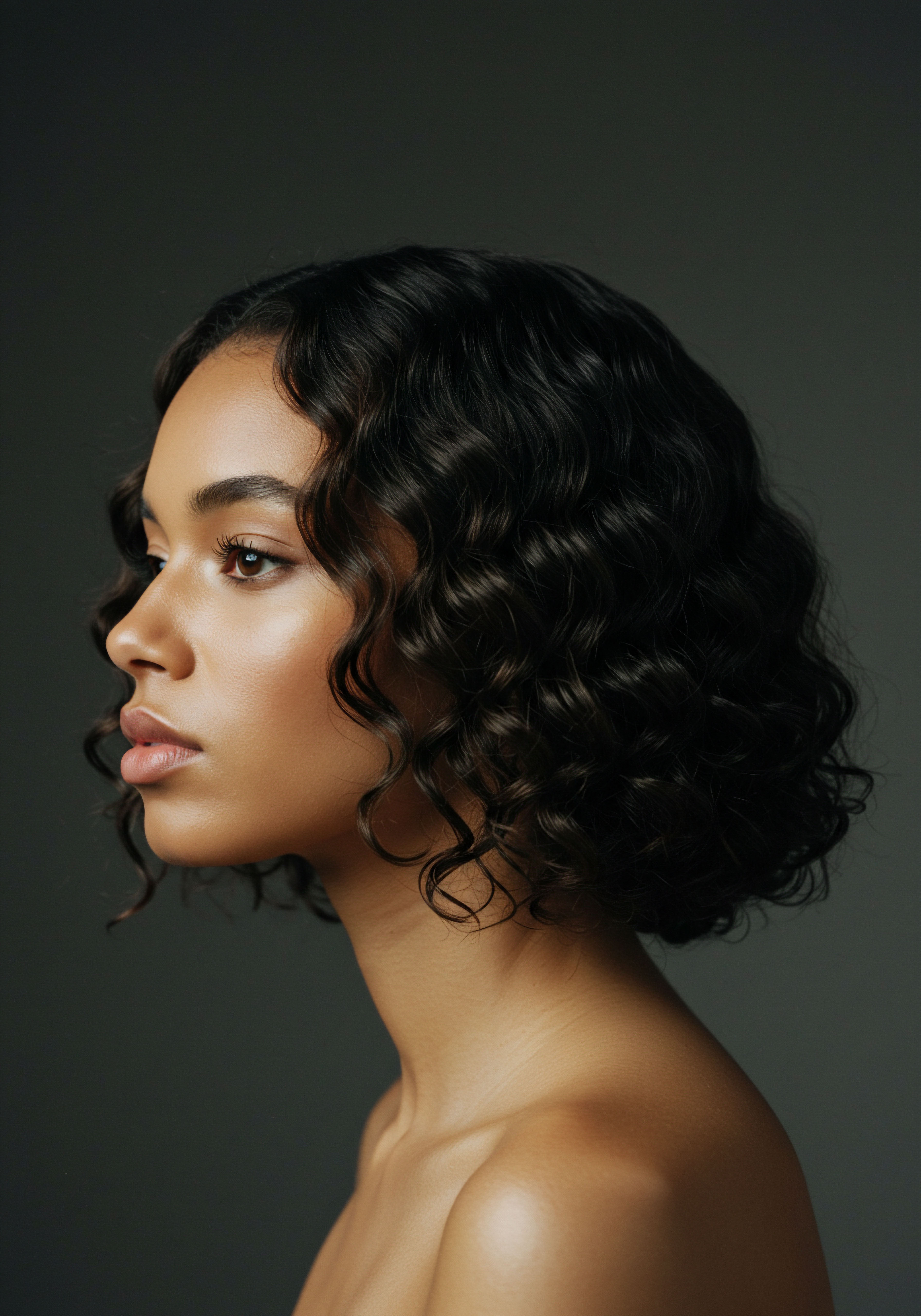
Hair Anatomy and Physiology Specific to Textured Hair
To understand the dance between textured hair and a cotton pillowcase, one must first appreciate the unique blueprint of these strands. Textured hair, whether tightly coiled, spiraled, or wavy, possesses a distinct elliptical or even flattened cross-section, differing from the more circular shape of straight hair. This structural variation contributes to its inherent strength and resilience, yet it also presents particular challenges. The twists and turns along the hair shaft create natural points of vulnerability, where the outermost protective layer, the cuticle, can lift.
The Cuticle, composed of overlapping, scale-like cells, acts as the hair’s primary shield, regulating moisture ingress and egress. In textured hair, these cuticle scales tend to be more raised than in straight hair, making the hair more porous by nature. This increased porosity means textured strands can readily absorb moisture from the air, yet they can also lose it with equal swiftness.
The intricate bends also mean that the hair’s natural oils, known as sebum, produced by the scalp, struggle to travel down the entire length of the strand. This uneven distribution often leaves the mid-lengths and ends of textured hair particularly prone to dryness, making external moisture sources and protective measures all the more significant.
Textured hair’s unique structure, with its elliptical cross-section and naturally raised cuticle scales, creates a predisposition for moisture loss.
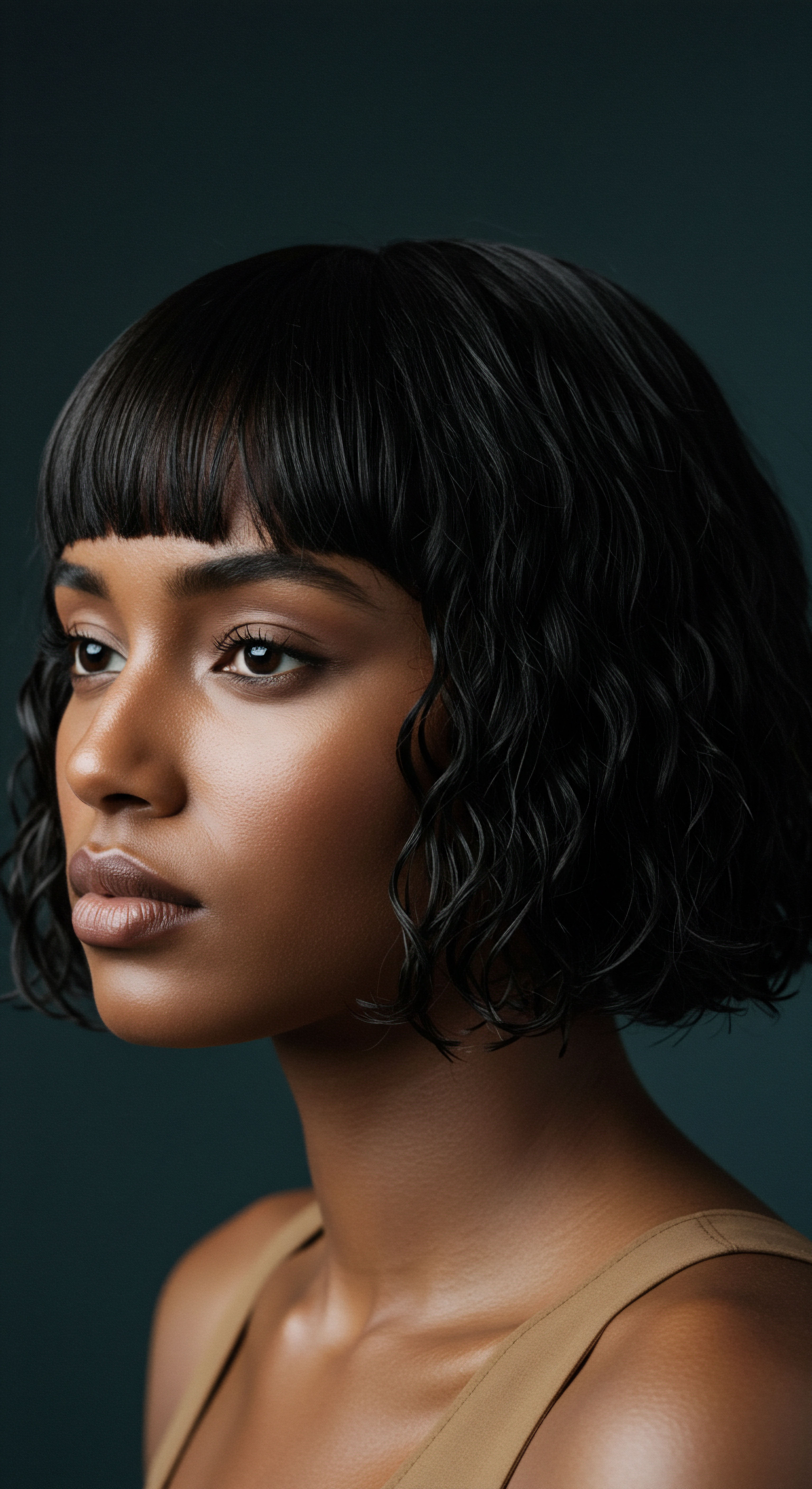
Textured Hair Classification Systems
While various systems exist to categorize hair textures, from the straightforward numerical and alphabetical types (e.g. 3A, 4C) to more nuanced descriptive approaches, their core purpose is to provide a common language for understanding hair’s physical characteristics. These classifications, while helpful for identifying styling needs and product compatibility, also subtly hint at the hair’s susceptibility to environmental factors.
For instance, tighter coils, often classified as Type 4, possess more bends and a greater surface area, which can exacerbate moisture evaporation. This makes them particularly sensitive to materials that draw away hydration.
Understanding your hair’s classification is not about fitting into a rigid box, but rather about recognizing its intrinsic needs. A Type 4C Coil, with its dense, tightly packed spirals, will likely respond differently to a cotton surface than a looser Type 3A Curl. The former may experience more significant friction and subsequent moisture depletion due to the increased points of contact and the greater challenge for sebum to travel down the strand. This inherent variability across textures means that the impact of a cotton pillowcase is not a uniform experience but rather a spectrum of effects, each dependent on the specific geometry of the hair.

The Essential Lexicon of Textured Hair
A shared understanding of terms grounds our exploration. When discussing textured hair and its interaction with sleep surfaces, certain words become central to the conversation.
- Porosity ❉ This term describes the hair’s ability to absorb and retain moisture. High porosity hair, where cuticle scales are more open, takes in water quickly but also loses it rapidly. Low porosity hair, with tightly closed cuticles, resists water initially but holds onto it once absorbed. Textured hair often exhibits varying degrees of porosity, impacting its response to environmental factors.
- Friction ❉ The resistance that occurs when two surfaces rub against each other. On a microscopic level, cotton fibers create a significant amount of friction against the hair shaft, especially against the raised cuticle scales of textured hair. This mechanical stress can lead to cuticle lifting and damage.
- Hydrophilic ❉ This describes a substance that has an affinity for water, meaning it readily absorbs and holds moisture. Cotton is a highly hydrophilic fiber, a property central to its role in potentially drying out hair.
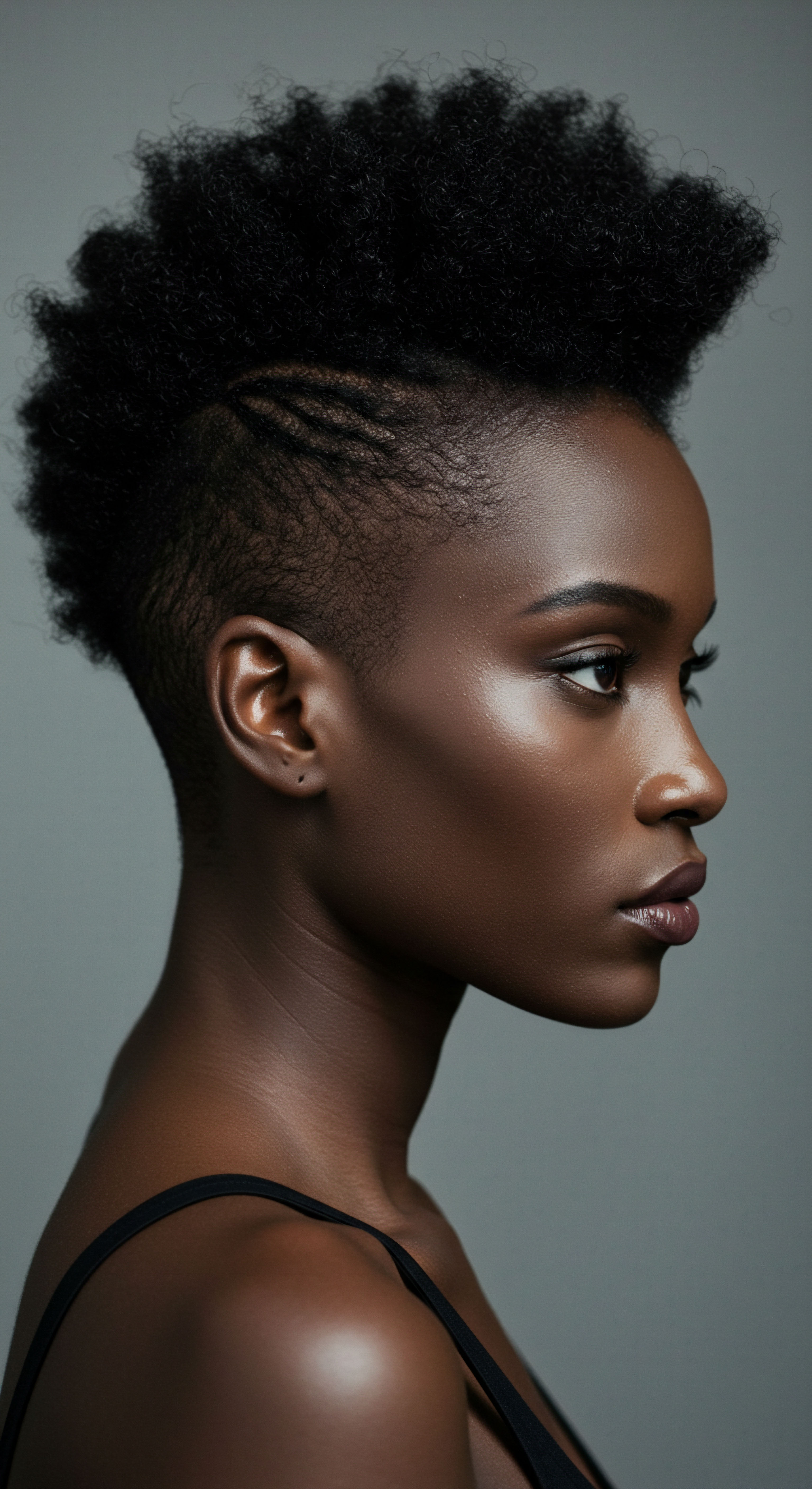
Hair Growth Cycles and Influencing Factors
The journey of a hair strand, from its emergence to its eventual shedding, follows a cycle with three main phases ❉ anagen (growth), catagen (transition), and telogen (resting). While the pillowcase’s direct influence on the growth cycle is minimal, its impact on the hair’s structural integrity over time can affect the hair’s ability to reach its full potential length and thickness during the anagen phase. Consistent mechanical stress from friction can lead to premature breakage, effectively shortening the perceived anagen phase for individual strands, even if the follicle itself continues to produce hair.
Environmental factors, product choices, and even internal wellness all contribute to the hair’s overall health. A cotton pillowcase, by consistently drawing moisture and creating friction, introduces a persistent external stressor. This stressor, while seemingly small in isolation, accumulates over countless nights, potentially undermining the efforts made through diligent hair care routines. The cumulative effect can manifest as persistent dryness, increased breakage, and a general lack of vibrancy, subtly altering the hair’s natural progression through its life cycle.
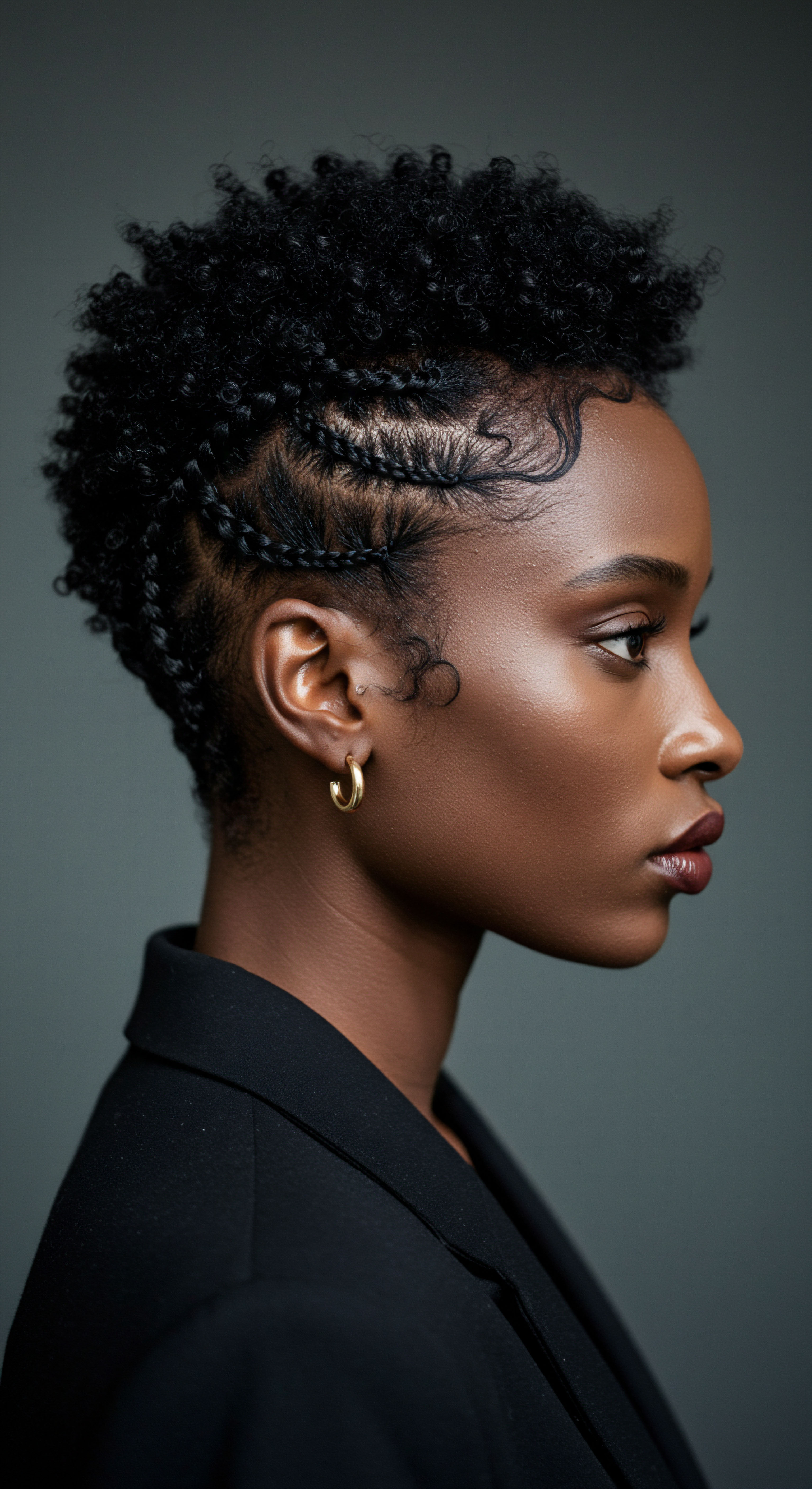
Ritual
As the day draws to a close, and the familiar rhythm of nighttime preparations begins, we often turn our attention to practices that bring comfort and restoration. For textured hair, this evening ritual extends beyond simple cleansing; it encompasses a conscious effort to safeguard its vitality through the hours of rest. The practical wisdom surrounding sleep surfaces, particularly the age-old debate concerning cotton pillowcases, arises from a desire to preserve the hair’s delicate moisture balance. This section delves into the actionable understanding that shapes our daily and nightly practices, offering gentle guidance on how to navigate the subtle influences that can shape our hair’s journey.

The Pillowcase Predicament
The common cotton pillowcase, a staple in many homes, possesses characteristics that, while comfortable for skin, present a particular challenge for textured hair. Cotton fibers are known for their absorbency; they are hydrophilic, meaning they readily attract and hold water. This property, beneficial for towels and clothing, becomes a point of concern when it comes to hair.
As textured hair rests on a cotton surface for several hours, the fabric can act as a sponge, drawing moisture from the hair shaft. This osmotic exchange, though gradual, can lead to a noticeable depletion of the hair’s natural hydration over time.
Beyond absorption, the texture of cotton fibers themselves contributes to mechanical stress. On a microscopic level, cotton fibers are relatively coarse and uneven. As hair moves against this surface during sleep, friction is generated.
For textured hair, with its naturally raised cuticle scales and intricate bends, this friction can cause the cuticle to lift further, leading to increased roughness, tangling, and ultimately, breakage. The cumulative effect of this nightly abrasion can compromise the hair’s integrity, making it more susceptible to environmental damage and further moisture loss during waking hours.

The Nighttime Sanctuary Essential Sleep Protection and Bonnet Wisdom
Creating a sanctuary for textured hair during sleep is a ritual born of both tradition and practical wisdom. The primary goal of nighttime protection is to minimize friction and prevent moisture loss. This often involves enveloping the hair in a protective covering or resting it on a surface that offers less resistance.
- Silk or Satin Bonnets ❉ These smooth, tightly woven fabrics offer a stark contrast to cotton. Their slippery surface dramatically reduces friction, allowing hair to glide rather than snag. This minimizes mechanical damage to the cuticle, preventing breakage and preserving the hair’s natural smoothness. Furthermore, silk and satin are less absorbent than cotton, meaning they do not draw moisture from the hair. This allows the hair’s natural oils and any applied conditioning treatments to remain on the strands, contributing to sustained hydration.
- Silk or Satin Pillowcases ❉ For those who prefer not to wear a bonnet, a pillowcase made of silk or satin provides a similar protective environment. The benefits are identical ❉ reduced friction, prevention of tangling, and preservation of moisture. This choice offers a comfortable alternative while still addressing the core issues presented by cotton.
The choice to protect hair at night is not merely a modern trend; it echoes historical practices across various cultures where head coverings were used not only for modesty or adornment but also for the preservation of hair health. These rituals speak to an innate understanding of hair’s vulnerability and the importance of consistent care.
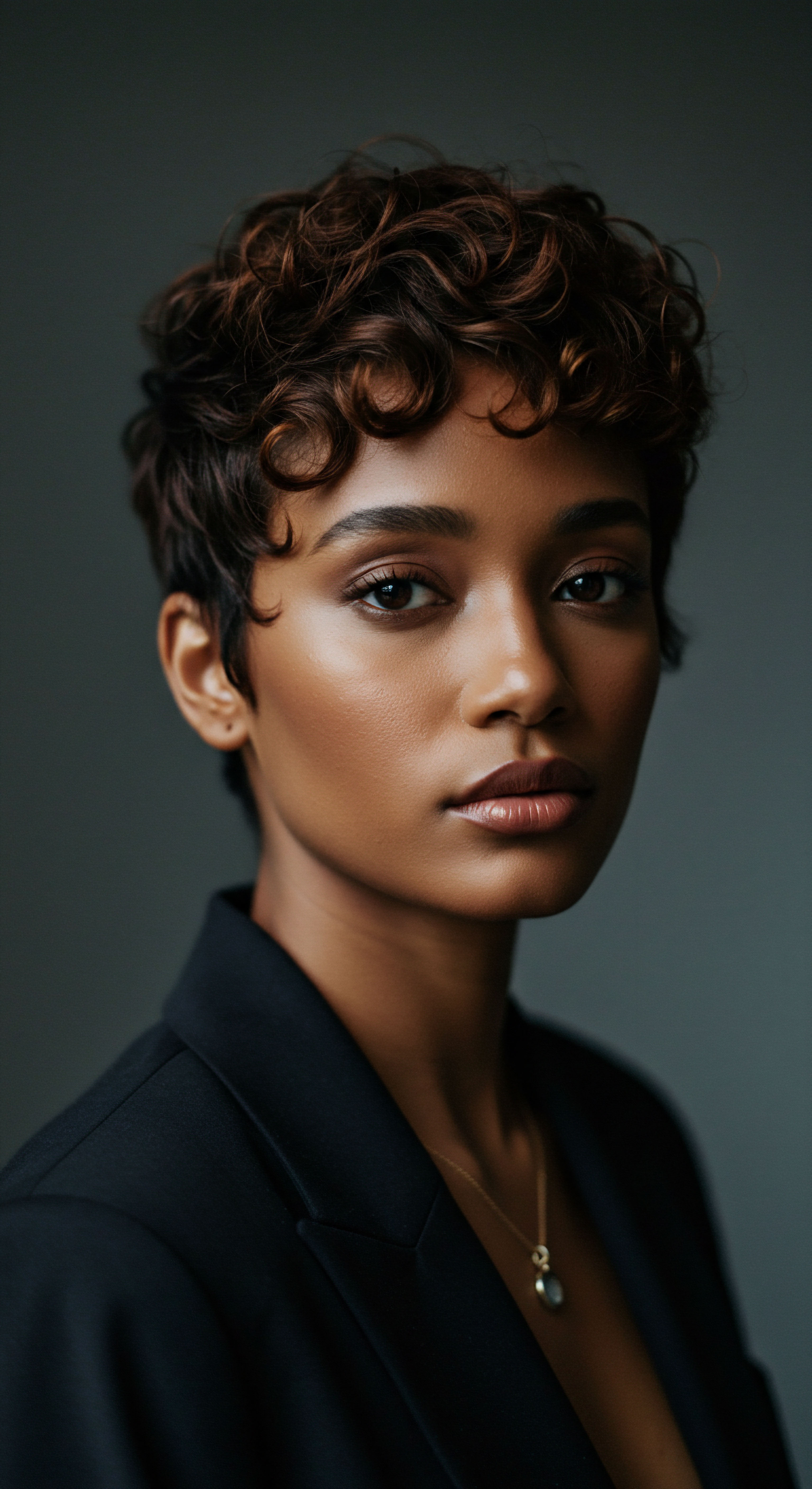
Ingredient Deep Dives for Textured Hair Needs
The products we apply to our hair also play a critical role in its resilience against drying influences. Understanding key ingredients can empower more informed choices.
| Ingredient Type Humectants (e.g. Glycerin, Hyaluronic Acid, Aloe Vera) |
| Mechanism of Action Attracts and draws moisture from the air into the hair shaft. |
| Benefit for Textured Hair Increases hair's water content, making it more pliable and less prone to dryness. |
| Ingredient Type Emollients (e.g. Shea Butter, Jojoba Oil, Coconut Oil) |
| Mechanism of Action Forms a protective barrier on the hair surface, sealing in moisture. |
| Benefit for Textured Hair Reduces moisture evaporation, adds softness and shine, minimizes friction. |
| Ingredient Type Proteins (e.g. Hydrolyzed Wheat Protein, Keratin) |
| Mechanism of Action Fills in gaps in the hair cuticle, strengthening the strand. |
| Benefit for Textured Hair Improves hair elasticity, reduces breakage, and can temporarily smooth the cuticle. |
| Ingredient Type A balanced approach using these ingredients can significantly bolster hair's defense against external stressors. |
When preparing hair for sleep, a leave-in conditioner or a light hair oil can serve as an additional layer of defense. These products, particularly those rich in emollients, can create a smoother surface on the hair, further reducing friction against a pillowcase and providing an extra shield against moisture loss. This thoughtful layering of care, combined with appropriate sleep protection, forms a comprehensive strategy for maintaining textured hair’s hydration and structural integrity.

Can Regular Product Application Counteract Cotton’s Drying Effects?
While consistent product application is certainly beneficial for textured hair, relying solely on topical treatments to counteract the drying effects of a cotton pillowcase is akin to constantly refilling a leaky bucket. Products like leave-in conditioners and oils provide temporary hydration and a protective barrier. However, if the hair is continually exposed to a material that actively absorbs moisture and creates friction, the benefits of these products are diminished over time.
Consider a scenario where someone diligently applies a rich moisturizing cream every night before bed, yet sleeps on a cotton pillowcase. The cotton will still absorb a portion of that applied moisture, and the friction will still contribute to cuticle damage. While the hair may feel softer immediately after product application, the cumulative effect of the cotton can lead to chronic dryness and breakage that is difficult to overcome.
It becomes a constant battle against an avoidable environmental factor. The most effective approach involves both robust product application and the proactive elimination of detrimental external influences, such as the use of cotton pillowcases.

Relay
The inquiry into cotton pillowcases and textured hair extends beyond surface-level observations, beckoning us into a deeper exploration where scientific principles, cultural legacies, and the very mechanics of materials converge. How might the subtle, constant interaction between our hair and a sleeping surface reveal insights into its long-term resilience? This section seeks to unravel the less apparent complexities, drawing from research and historical perspectives to provide a profound understanding of how this seemingly minor detail can indeed shape the enduring health of textured strands.

The Tribology of Hair and Fabric Interaction
At the heart of the cotton pillowcase debate lies the science of tribology – the study of friction, wear, and lubrication between interacting surfaces. When hair, particularly textured hair with its non-uniform surface, rubs against a fabric, mechanical forces are at play. Cotton fibers, being relatively short and rough, create a high coefficient of friction. This means that as the head shifts during sleep, the hair strands do not glide smoothly but rather snag and abrade against the fabric.
This continuous abrasion directly impacts the hair’s cuticle. The cuticle, composed of keratinized cells arranged like shingles on a roof, is designed to protect the inner cortex. When subjected to persistent friction, these scales lift, chip, and can even break off. A compromised cuticle allows the internal moisture within the hair shaft to escape more readily, leading to dehydration.
Furthermore, a roughened cuticle makes the hair more prone to tangling and knotting, exacerbating the mechanical stress during styling and detangling processes. The damage accumulates, not as a sudden event, but as a slow, insidious degradation over weeks, months, and years.
The continuous friction between textured hair and cotton fibers leads to cuticle damage, which compromises the hair’s ability to retain moisture.

Moisture Dynamics and Hydrophilic Materials
Cotton is a natural cellulose fiber, renowned for its excellent absorbency due to its hydrophilic nature. Its molecular structure contains numerous hydroxyl groups that readily form hydrogen bonds with water molecules. This property makes cotton highly effective at wicking away moisture. While this is desirable for a towel, it poses a significant challenge for hair, especially hair types already predisposed to dryness.
Consider the principles of water potential. Water naturally moves from an area of higher concentration to an area of lower concentration. When textured hair, which strives to maintain a certain moisture level, rests on a highly absorbent cotton surface, the cotton acts as a moisture sink. Over the course of several hours of sleep, the cotton draws water from the hair shaft, creating a drier environment for the strands.
This effect is particularly pronounced in low-humidity environments or for individuals whose hair has high porosity, as their hair’s moisture barrier is already less efficient. The constant draw of moisture can lead to a state of chronic dehydration, making the hair feel brittle, rough, and less pliable.

Cultural Echoes of Hair Protection
The practice of protecting hair during sleep is not a modern invention but a wisdom passed down through generations in many cultures, particularly those with a heritage of textured hair. Long before scientific studies confirmed the tribological effects of fabrics, communities understood the fragility of hair and the importance of its preservation.
Across various African diasporic cultures, head coverings, bonnets, and wraps were not merely fashion statements or symbols of modesty. They served a vital practical purpose ❉ to shield hair from the elements, preserve intricate styles, and, crucially, to protect it during sleep. These traditional practices reflect an intuitive grasp of hair science – an understanding that preventing friction and retaining moisture were paramount for maintaining hair health and promoting length retention.
The nightly ritual of wrapping hair in silk or satin, or even simpler cloths, was a proactive measure against the very issues we now analyze through scientific lenses. This cultural knowledge underscores the enduring validity of protecting textured hair from abrasive surfaces.
A notable study published in the Journal of Cosmetic Science examined the impact of different fabrics on hair properties. While specific numerical data on cotton’s direct drying effect on textured hair over time can be difficult to isolate due to the multifactorial nature of hair health, research on fabric friction and moisture absorption provides strong indirect evidence. For instance, a study by S. H.
Lee and M. H. Nam (2007) on the frictional properties of human hair against various textile surfaces demonstrated that Cotton Fabrics Exhibited Significantly Higher Coefficients of Friction Compared to Silk or Satin. This increased friction leads to greater mechanical damage, which in turn compromises the hair’s cuticle integrity and accelerates moisture loss. This finding, though not directly measuring ‘dryness,’ strongly supports the hypothesis that cotton contributes to the conditions that lead to hair dehydration and damage.

How Does Environmental Humidity Affect the Cotton-Hair Interaction?
The interplay between a cotton pillowcase and textured hair is further complicated by the ambient humidity of the sleeping environment. In highly humid conditions, the cotton fabric itself may absorb moisture from the air, potentially lessening its immediate draw from the hair. However, this is a nuanced point.
While the cotton might be saturated with environmental moisture, its rough surface still presents a significant friction hazard. Moreover, once the air humidity drops, or if the cotton has absorbed its capacity, it will revert to drawing moisture from the nearest source, which is often the hair.
Conversely, in dry climates, the impact of a cotton pillowcase becomes even more pronounced. With less moisture available in the air, the hair’s inherent hydration is already challenged. The highly absorbent cotton then acts as a relentless siphon, accelerating the dehydration process.
This environmental factor amplifies the detrimental effects of cotton, making protective measures even more critical for maintaining the health and hydration of textured hair in arid conditions. The relationship is dynamic, influenced by both the material properties and the atmospheric conditions surrounding the hair.
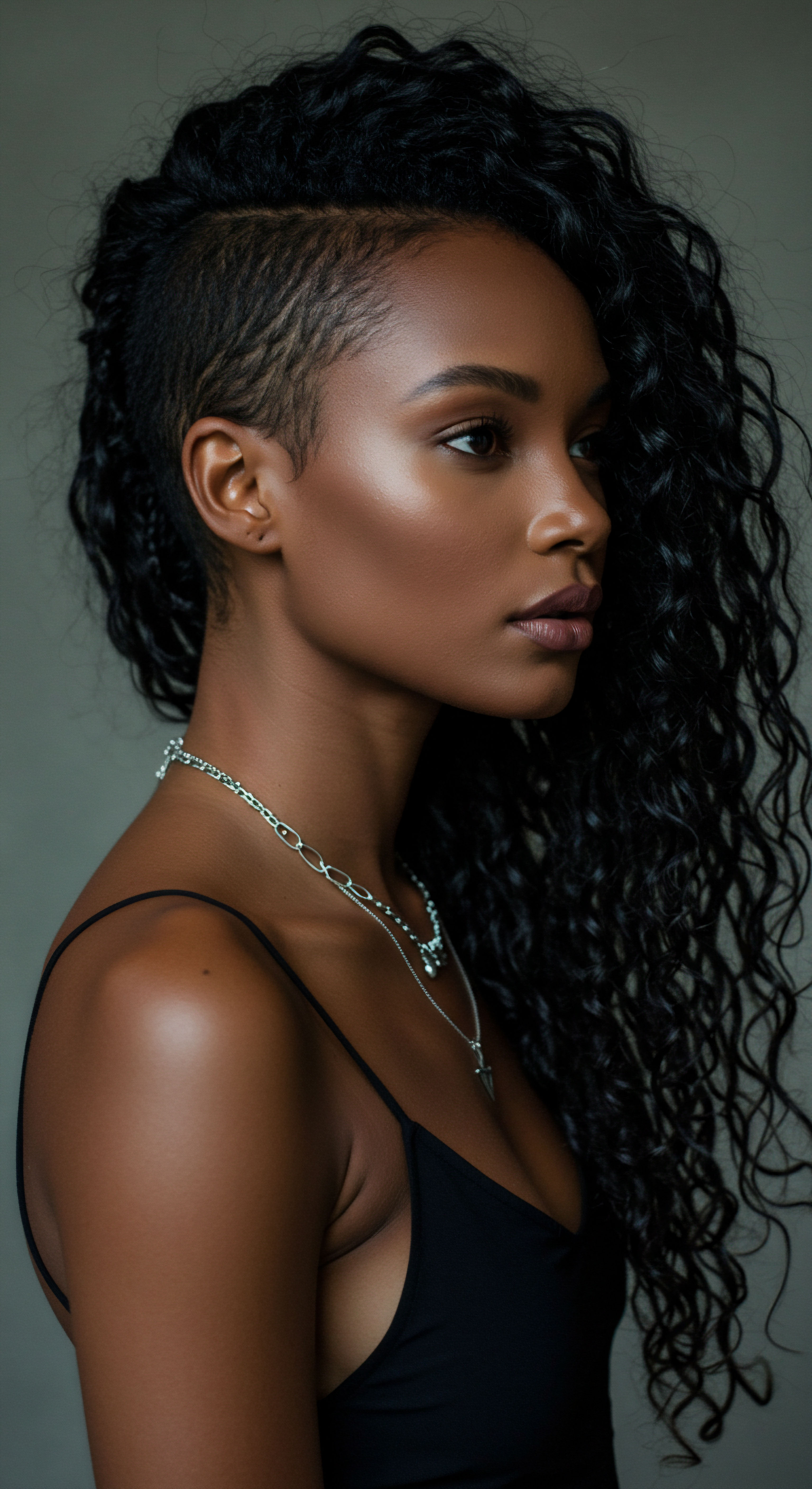
Reflection
The seemingly simple question of whether a cotton pillowcase can truly dry out textured hair unfurls into a rich tapestry of understanding, drawing from the intimate knowledge of hair’s very structure to the quiet wisdom passed through generations. We see that the answer resides not in a singular truth, but in a delicate balance of physical properties, environmental influences, and the mindful choices we make. The daily interaction, the nightly repose, each contributes to the enduring story of our hair.
It is a story of resilience, of subtle vulnerabilities, and of the profound impact that seemingly small details can wield over time. To truly care for textured hair is to appreciate this intricate dance, to honor its heritage, and to provide it with the gentle protection it deserves, allowing its inherent vibrancy to shine through.

References
- Lee, S. H. & Nam, M. H. (2007). Frictional properties of human hair against various textile surfaces. Journal of Cosmetic Science, 58(1), 1-12.
- Robbins, C. R. (2012). Chemical and Physical Behavior of Human Hair (5th ed.). Springer.
- Goeckeler, E. (2018). The Curl Revolution ❉ Hair Care for Textured Hair. Independent Publisher.
- Khanna, S. & Bhushan, B. (2018). Friction, Wear, and Lubrication ❉ A Textbook in Tribology. CRC Press.
- Poucher, W. A. (1993). Poucher’s Perfumes, Cosmetics and Soaps (9th ed. Vol. 3 ❉ Cosmetics). Chapman & Hall.